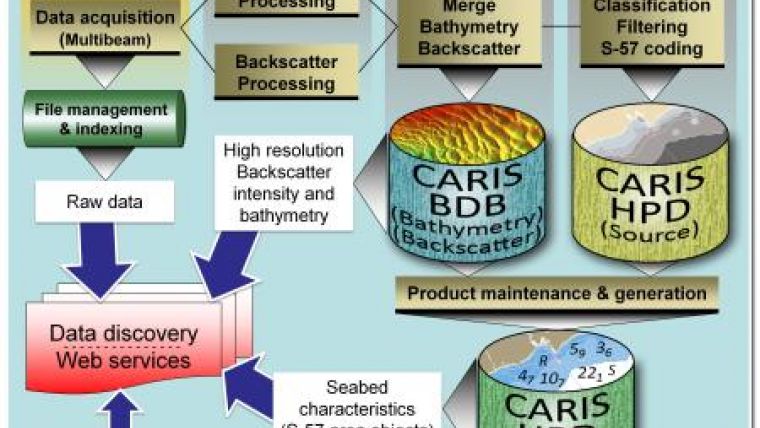Backscatter from Ping to Database - a CHS Perspective
The Canadian Hydrographic Service (CHS) is willing to make better use of the backscatter intensity data collected with its multibeam sounding systems. Because the backscatter data collected during the last two decades was not systematically processed and maintained, much valuable information has not yet been used and is archived on tapes and disks. CHS intends to make an inventory of this data and to process it to a minimum level so that it can be made accessible both to its cartographers and to the wider scientific community.
Backscatter information can be a valuable piece of information for traditional chart production, habitat mapping and in many other fields of activity where substrate type is a variable. This article describes a potential dataflow with the Caris suite of software which may serve as a guideline for future processes and tool development related to backscatter data. At a time when resources are increasingly limited, the treatment of backscatter is not the highest priority for CHS, but the development of this concept will allow CHS to be ready if new resources become available (continue reading).
Image: Backscatter data flow.














